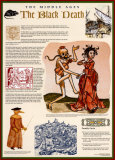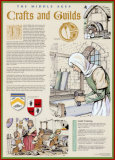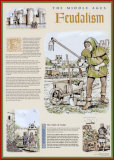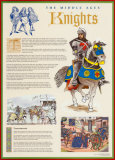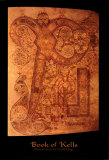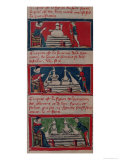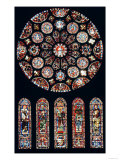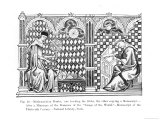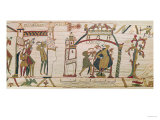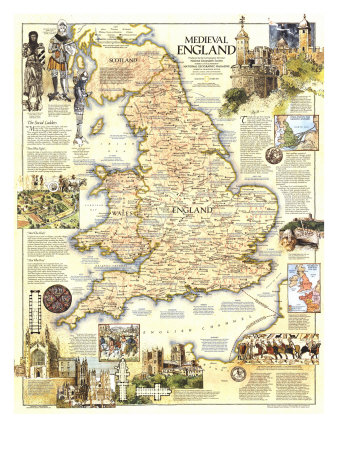|
|
|
|
|
|
|
|
|
|
|
|
|
|
|
|
| FYI ~ author Sigrid Undset was awarded the 1928 Nobel Prize in Literature for “principally for her powerful descriptions of Northern life during the Middle Ages”. |
|
|
|
 |
|
|
|
The Middle Ages Educational History Posters
for the classroom and home schoolers, theme decor.
|
history > THE MIDDLE AGES < social studies
|
|
The “Middle Ages” educational history poster series feature events and concepts of European history: the Black Death; the Church; Crafts and Guilds; the Crusades; Feudalism; Knights; Literature, Arts and Architecture.
The Middle Ages, also referred to as the Medieval period, describe an approximately 1000 year (+or-) time span in Europe, marked as dissolution of the Roman Empire's centralized power to decentralized feudal system. The term “Dark Ages”, a term coined by early Renaissance historians, is no longer an apt description of the period as research continues to reveal a complex paradigm characterized by a cultural “introversion” as opposed to a “extroverted” expansion.
The Middle Ages begin as a period of mass migration known as the Barbarian Invasions and the new order of Western and Eastern Roman Empires (c. 400-476 AD) and ends in the period of the Protestant Reformation, c. 1453-1517 AD, and the beginning of the Age of Discovery with the Spanish and Portugese explorers.
• “There is something dark and wintry about the atmosphere of the later Middle Ages.” ~ Lytton Strachey
|
|
|
|
The Middle Ages-
The Black Death
Sometine in the early 1300s, news began to reach Europe about a killing sickness in the Far East. With a few years, the same plague, which came to be called the Black Death, would take the lives of millions of Europeans.
The Black Death was a disease called bubonic plague. The disease spreads to humans from a germ carried by fleas on the black rate. The feas bit infected rats and then bite and infect humans. the plague can cause painful black swellings, called “buboes.” on a victim's neck, groin, or armpits, and dark patches on the skin.
Outbreaks of the palgue had come to Europe before the mid-1300s and continued in the centuries that followed. But the epidemic known as the Black Death was the biggest outbreak, killing about one-third of all the people in in Europe before it began to disappear in 1351.
Rat-infested trading ships may have brought the plague from the East and spread it in parts of Europe. sometimes a ship's entire crew was dead or dying when it arrived in a European port. The City Caffa, in what is now Ukraine, was a trading center controlled by Genoa, Italy. In 1347, the Mongol army, which had been sweeping across Asia since the 12th century, attacked Caffa. A deadly disease was killing Mongol soldiers, and the Mongol commander catapulted the dead bodies into the city, infecting Caffa's citizens with the disease. Those who fled carried the disease with them.
As far as medieval doctors knew, the only way to avoid getting sick was to avoid sick people. Plague victims were often shunned, even by their families. People who could afford to fled the corwded citieis, while the poor stayed behind.
Fear and ignorance led peple to blame the disease on groups who were already hated. In Spain, the Muslims were blamed, in France, the English. But Jewish people, more than any other group, were singled out. In Switzerland, Jews were accused of poisoning water supplies. In one Swiss town, every Jew was rounded up and burned to death. Hundreds of other massacres of Jews took place in Europe during the plague.
The Black Death, and the huge numbers of deaths it caused, also affected the economy of Europe. The prices of crops fell because there was less demand for food. The prices of manufactured goods, such as cloth and nails, went up because there were fewer skilled craftsmen. The sharp decrease in population created labor shortages, so peasants could demand higher wages for their work. This helped break down the division between the wealthy and the poor and create a new middle class.
Deadly Facts
• Some areas of Europe were relaviely untouched by the plague, while others suffered far more. Between 45% and 75% of the citizens of Florence, Italy, died in a single year during the Black Death.
• In Venice, Italy, 60% of the population died within 18 months – about 500 people a day during the height of the outbreak.
• It is estimated that 2.5 million Europeans died from the plague during the Black Death.
• The population of western Europe did not reach its pre-Black Death level again until the 16th century.
:::::::::::::::
The Black Death was one of the most devastating pandemics in human history, peaking in Europe between 1348 and 1350. It is widely thought to have been an outbreak of bubonic plague caused by the bacterium Yersinia pestis, carried by fleas associated with the black rat and other rodents.
It is thought to have started in China and was transported along the Silk Road, reaching the Crimea (western Asia) by 1346. From there it spread throughout the Mediterranean and Europe. Historians estimate that the world's population was reduced from an estimated 450 million to between 350 and 375 million by 1400.
The Black Death somewhat contributed to the destruction of the feudal system in the Middle Ages, and many of the upper classes were forced to give higher wages and more freedom to their workers willing to work on the nobles' lands because of the high death toll. The Black Death also killed many great kings and nobles, leaving issues with inheritance of land and money left to their families. In its aftermath, the Black Death may also have favoured the use of more advanced farming tools as a smaller workforce was available and plots grew larger as a result of the population loss.
~ source Wikipedia
• diseases & disorders posters
• Giovanni Boccaccio print
• The Decameron
|
|
|
|
The Middle Ages-
The Church
The Church was the single most important force in medieval society. By the year 1000, nearly all Europeans were Christians, which at that time meant they belonged to the Catholic Church.
Church officials promised kings and other nobles that their souls would be saved if they gave lands and money to the Church. Nobles also use their wealth to buy the Church's support. Peasants had to pay the parish priest a “tithe” – a tenth of whatever they had produced from their land over the couse of the year. As a result, in the Middle Ages the Catholic Church became very rich and powerful.
Church officials were able to limit and launch wars. But sometimes, kings and the pope (the head of the Church) struggled for power. At times, kings even set up their own popes, which divided and weakened the Church.
In the Middle Ages, the Church had the power to punish people who preached against its teachings. These people were called heretics. Heretics who refused to stop spreading their beliefs might even be burned at the stake. This was a terrible punishment, but cruel punishments were common in the Middle Ages.
The Church used some of its wealth to set up and run hospitals and schools. Nuns and monks did most of the work in the hospitals. Priests and monks taught boy reading and writing, Latin, and arithmetic in Church schools. Nuns educated young girls in convents. The Church also started universities to educated young men to become priests and monks.
Most people, however, never had the opportunity to learn to read. So priests used other ways to teach their congregations about God. In their churches, people saw statues of Christ and saints, as well as pictures and stained-glass windows that illustrated stories from the Bible and the lives of saints. These were the only works of art many people ever saw.
In many ways, village life centered on the church building. The largest building in the village, it was used for worship on Sundays and as a market, a school, or a Church law court during the week.
Celebrations were usually related to the Church's holy days. Christmas was a holy day or ‘holiday.’ The day of a saint's birth or death might also be aholiday, called a ‘feast day.’ Many people, towns and guilds had patron saints – saints to whom they prayed for help and comfort. Towns and guilds often honored their patron saints with feast days. Feast days varied from town to town, fbut most palces had dozens of such holidays each year.
Monks and Friars
In the sixth century, St. Benedict set up the rule that guided his monks and that would later be followed by monks, nuns, and friars across Europe. This rule said that those dedicating themselves to the religious orders must take vows of poverty (to own no property), chastity (not to mary or have children), and obedience (to obey orders of their leaders).
Monks lived in religious communities called monasteries or priories. Althought the monks personally gave up any property, some of the monasteries were very rich. Many noblemen donated the property on which these religious communities were founded. The monks spent most of theri time praying, working in the monasteries' fields, and educating boys, most of whom planned to join the monastery. Some monks had the job of copying manuscripts by hand. (There were no printing presses.) They often produced beautiful illustrated books called illuminated manuscripts. This kind of life was open to men and women: churchwomen became nuns and lived together in communities called convents.
In the 13th century, St. Francis of Assisi started a new religious order called the friars. The word friar simply meant “brother,” and the friars were like monks in that they took religious vows and lived in religious communities. Unlike monks, they went out into the towns and countryside to preach to the people.
|
|
|
|
The Middle Ages-
Crafts and Guilds
During the Middle Ages, nearly everyone who lived in a European town was a merchant or craftsman. A few other townspeople made their livings as doctors, lawyers, teachers, or moneylenders. Some merchants imported and exported goods between countries, and other merchants bought and sold locally produced items, such as wool. Craftsmen made the things that townspeople needed and wanted, such as shoes, bread, cloth, pottery, barrels, funiture, and medicines. Most craftsmen sold their wares in small shops on the street level of their houses. Other craftsmen, such as builders, planned and directed the construction of churches, houses, and public buildings. Sometimes women, especially the wives and daughters of craftsmen, also became craftspeople. Craftsmen often used their professions as their last names. This is why today there are people named Shoemaker, Baker, Weaver, Smith, and Mason.
To become a guild member, a young person had to train for years. these trainees were called apprentices. A guild master taught his craft to his apprentices and examined their workmanship. Guilds set the rules for how a master guildsman could treat the apprentices he trained.
Guilds helped their members and their towns in many ways. They helped support sick members and their families. They provided funeral expenses for poorer members and aid to survivors. They build chapels, churches, public buildings, and walls to defend the cities. The guilds also protected their towns by assigning their members to night watches. A town's officials were often chosen from its guild masters.
Each of the craft and merchant guilds had its own patron saint and feast day. The saint was someone who supposedly had practiced the guild's craft or trade. The guild members celebrated the saint's feast day, which was usually his or her birth date, as a holiday. They had a prade and then a day of feasting and games.
Guild Training
Nearly everyone who wanted to join a guild had to go through several years of training and then prove that he or she was qualified to be a master craftsman. the stages of training were:
1. Apprenctice: Training often began in childhood. A young boy or girl was apprenticed to a craftsman. The apprentice lived in the home of the cratsman and worked there for tow to seven years without pay to learn the craft.
2. Journeyman: At around age 20 or so, the apprentice became a day worker, or journeyamn. The journeyman received wages for his (or sometimes her) work. The journey man had to produce a very good piece of work – known as a ‘masterpiece’ – to prove his ability.
3. Masters: When a journeyman satisfied the head of the guild that he was capable of doing high quality work, he could become a master craftsman and a member of the guild.
• Images of Labor poster series
• Careers and Jobs posters
|
|
|
|
The Middle Ages-
The Crusades
In the Middle Ages, European Christians who were able made pilgimmages, or journeys, to visit sacred places in what they called the Holy Land. This Land was the country of Palestine (which is basically modern-day Israel). Although Muslims had captured Palestine and much of the Middle East in the 600s, they allowed Christians to live in or visit the Holy Land. In the 11th century the Seljuk Turks, who became Muslims, swept across much of the Middle East. The Turks taxed the Christian pilgrims and destroyed some of the Christian shrines. When the Turks threatened the Byzantine empire, the Byzantine emperor appealed to the pope for help.
In 1095, Pope Urban II called upon European Christians to recapture the Holy Land, especially the city of Jerusalem, where Jesus had died. The pope promised that those who died in battle in the Holy Land would have their sins forgiven. Kinights who answered the pope's call wore a cross on their clothing. The expeditions to the Holy Land were called the “Crusades,” after the Latin word for cross.
Between the 11th and the 13th centuries, crusading kings, princes, and knights, along with armies of foot soldiers, set out for the Holy Land. But they were not the only crusaders. Peter the Hermit lead a group of mostly penniless peasants across Germany and eastern Europe in 1096. The plundered as they went along and, with the idea or ridding Europe of non-Christians, murdered the Jews in German cities. Most of Peter's followers were slaughtered by the Turks. In 1212, thousands of children went on a Crusade. Most were killed or sold into slavery before they reached the Holy Land.
The Christians were most successful during the First Crusade. They captured Jerusalem in 1099, then slaughtered every person living in the city. The Europeans established four Christian states in Palestine and Syria. They built castles to defend the states, but they were a small population surrounded by Muslims. In the fifth century, the great Muslim leader Saladin organized the Islamic states into a strong fighting unit. Muslim forces recaptured Jerusalem in 1187, although Saladin granted permission for Christians to visit the city. In the six Crusades that followed, the Crusaders never regained their position of strength. The last Christian outpost fell in 1291, ending almost 200 years of a western presence in the Holy Land.
The Major Crusades
1096 - First Crusade - The crusaders capture Jerusalem and parts of the Middle East and Asia Minor. They established four Christian states.
1146 - Second Crusade - French and German crusaders attempt but fail to recapture the Christian state of Edessa, which Muslims took in 1144.
1187 - Third Crusade - “Crusade of Kings”. Frederick Barbarossa of Germany; Philip Augustus of France; and Richard I, the Lionhearted, of England recapture some of the territory lost to the Muslims. Tthe Crusade ends in a truce between Richard and the Muslim leader Saladin, and Christians are granted the right to enter Jerusalem for pilgimmages.
1196 - Fourth Crusade - “Trader Crusade”: Mediterranean merchants join the crusaders. They never reach the Holy Lands, but instead plunder the Byzantine Empire in 1204 and establish trade posts in the Christian states in the Middle East.
1212 - “Children's Crusade” - 50,000 French and 20,000 German children walk to the Holy Land. Most die or are enslaved.
Frankish knight Godfrey of Bouillon (c. 1060 – 18 July 1100) was one of the leaders of the First Crusade from 1096 until his death in Jerusalem after a prolonged illness.
|
|
|
|
The Middle Ages-
Feudalism
Feudalism was a system of relationships between the people who owned the land and the people who lived and worked on it. Feudalism began in Europe around the eighth century. It first appeared in France. The early kings assigned large parcels of land to their military leaders, or knights. In return for land, which was called a fief, a knight pledged to serve and defend the king. People who promised their loyalty in this way were called vassals. The vassals had the use of the land. They lived there, hunted in its forests, cut down the trees for wood, fished its streams, and grew crops on the fields.
Although the king still actually owned the land, the king's vassals sometimes awarded pieces of the land land they held to man who were loyal the them. In this way, the king's vassals created vassals of the their own.
The king could call his vassals to war and also expect some kind of payment or favors for use of the lands. The lords (the king's vassals) could expect the same services and payment from their vassals. The knights who held the land were usually warriors. Having land made a knight and his family members of the upper class, known as the aristocracy or nobility.
Vassals build castles on their estates for the protection of themselves and the people who lived and worked there. In the later Middle Ages, when times were more peaceful, the nobility held large estates called manors. A manor consisted of a large main house, one or more villages, and up to several thousand acres of land divided into meadow, pasture, forest, and cultivated fields. “Manorialism” referred to the relationship between the people who farmed the land and the land holder.
Most of the people who actually farmed the land were serfs. Little better than slaves, serfs were bound to the land. They could not leave the estate, nor could they be forced to leave it. They owed their lord a share of their harvest and livestock, and they had to work in the fields for a certain number of days each week. Some of the people on a lord's estate were freeman. They paid rent, usually in the form of crops, to the lord for the use of his land. Servants and craftsmen, who might be freemen, serfs, or slaves, also lived on the estates.
The Oath of Fealty
In the Middle Ages, a knight became another's vassal by pledging his fealty (faithfulness). He knelt before his lord, who took the vassals hand between his own. Then the vassal repeated the following oath or one very like it:
You have been willing to allow me to hand myself over or commend myself to your protection. This I have done on these conditions: You are to aid and support me with food and clothing, insofar as I shall be able to serve you and deserve will of you. As long as I shall live, I am bound to give you service and obedience. For the rest of my life I shall have no power to withdraw from your lordship and protection, but all the days of my life I must remain under your power and defense.
.....
The feudal customs structured society around relationships among the “three estates” or classes - the clergy, the nobility and the commoners, or between those who held land granting occupancy and protection in exchange for service or labor. The peasants are sometimes refered to as the "fourth estate”.
|
|
|
|
The Middle Ages-
Knights
The knights was the mounted soldier of the Middle Ages, His job was to serve his lord, to fight his lord's battles, and to defend him. His lord was the nobleman – usually a king, prince, duke, or earl – whom the knight had pledged to obey in return for land or pay. Most knights also came from noble families, but it was possible for peasants, tradesmen, or common soldiers to be knights, especially if they performed some heroic deed on the battlefield. Even a few women became knights.
Most of the time, knights owed their lords a fixed number of days usually 40% of military service a year. In place of military service, a knight who had land or other wealth might pay a special tax to his lord.
A boy began training for knighthood when he was about 7 years old. He was sent from his home to live in the castle of another knight. At first the boy would be what was called a page. He ran errands and served at the table. He was taught to use weapons, to play musical instruments, and to read and write. The page learned manners. He also learned to ride and care for horses. A page might be with his knight when he went to fight, but the boy would not take part in the battle. Instead, the page looked after the comfort of his knight and tended the horses.
At around 14, the page became a squire and his duties grew more difficult. The squire learned more military skills. He would fight at his knight's side and guard him in battle. By the age of 21, a squire usually had completed his training. Some men remained squires, but others were knighted at a special ceremony. A knight “dubbed” the squire by striking him lightly on the neck with a sword. The new knight got his sword and golden spurs at the ceremony.
A knight's main weapon was along sword. He also had a lance, and some knights used axes. The knight protected himself in battle with armor and a shield. In the early Middle Ages, knights wore chain-mail armour, a coat made of small iron rings. Later, armor was made of steel plates. The knight's shield not only protected him, it also bore his coat of arms, a special design that identified him.
Knights were supposed to follow a set of rules known as the code of shivalry. According to these rules, the true knight believed and obeyed the teachings of the Christian church. He obeyed his lord as long as his duties did not conflict with his duties to God. The knight was supposed to love his country. He was also expected to be brave and truthful and to defend the weak. It was a great honor to become a knight.
Tournaments -
Knights aften competed in contests called tournaments. Tournaments were popular entertainment, much like sports events, and they drew large crowds.
The tournaments were mock war games that helped knights sharpen their fighting skills. In addition, the knights showed off their individual skills and bravery. Decked out in their finest armor, constestants also often wore scarves of ribbons given to them by their favorite ladies.
The most exciting part of the tournament was the joust. Two knights with lances on horseback charged at each other. The knight who broke the other's lance or knocked him off his horse won the joust. the winner usually got the loser's horse and armor, and the loser had to pay to get his things back.
Tournaments had strict rules, and they could still be dangerous. The knights were not supposed to use sharp weapons or hit a horse. But accidents did happen. And sometimes knights lost their temper and began actually fighting.
|
|
|
|
|
|
|
The chantefable (combination of prose and verse) of the lovers “Aucassin Et Nicolette” is an entertaining romance sung by troubadours.
Troubadours were composers and performers of lyric poetry during the High Middle Ages, 1100-1350.
Nicolette can be seen as a “proto-feminist” - she actively searched for her beloved Aucassin while he only bemoans not being able to find her.
|
|
|
|
|
|
|
Book of Kells is an illuminated manuscript of the four Gospels of the New Testament, based mostly from Jerome's Vulgate. It was transcribed in Latin by Celtic monks c. 800 AD and is considered to be Ireland's finest national treasure.
• alphabet posters
|
|
|
|
Alchemy, the precursor of modern chemisty, was systemic experimentation and observation in the quest to transform lead into gold.
Carl Jung intrepreted the Alchemist's work symbolically as the transformation of humanity into God.
|
|
|
|
|
|
|
A monk is a person who leads a “monastic life” in a “monastery” with like-minded people, apart from those not sharing the same purpose. In the Middle Ages the monasteries were centers of learning.
• more mathematicians posters
|
|
|
|
Halley's Comet and Harold Receiving Bad News, detail from the Bayeux Tapestry
• comets posters
|
|
|
|
|
|
|
Castles ~ The age they sprang from faded long ago, the imposing castles and soaring cathedrals that grace the landscape keep England's medieval heritage vividly alive. They stand as monuments of the tumultuous Middle Ages, a millennium that saw a united England emerge from a caldron of diverse peoples set to boiling when the last Roman rulers left in about A. D. 400. England then lay open to invaders - first the Angles, Saxons, and Jutes, who established kingdoms. Later from the north thundered fleets of fierce Danish and Norwegian Vikings, who pillaged England from the ninth to the eleventh centuries - a time when the Northmen dominated the seas from Russia to North America. Their ferocious hit-and-run attacks escalated into the Danish wars of 865-896, during which Alfred the Great successfully defended his kingdom of Wessex - the only English domain then eluding the Scandinavians. But a century later another sustained assault by the Vikings ended with conquest, and England was finally united under the Danish King Canute. The Viking influence survives today in many of England's place-names, and in occasional words still spoken in the north.
The last major invasion came in 1066 from neighboring France. The Normans brought a new, French-speacking nobility; they set about building larger fortresses to stave off rebellion and outside attack. To those castles even the initially restive native English eventually looked for protection.
For solace in a world marked by hardship, the closeness of death, and the fear of hell, people looked to religion. Churches became centers of social life as well as places of worship. Prayer and learning thrived, first in the monasteries, later in the universities. At oxford and Cambridge, both established by the early 13th century, were sown the seed of law, theology, science, art, and philosophy that today influence man's view of himself and his world.
The Social Ladders ~
“Men who pray, men who fight, and men who work.” The ingredients for a well-run kingdom according to King Alfred, who reigned from 871 to 899, reflect a view of the world as a divinely inspired hierarchy. His age believed that God designed two parallel social ladders. At the top of one the pope stood over the clergy. On the secular side stood the king, the nobility, and peasantry. Though each had his prescribed niche, the system permitted mobility.
“Men Who Fight” ~
From the idea of courtly love, embodied in the nobility, spring notions of the age of chivalry: the dashing knight, pur in purpose, brave in war, ardent in romance, steadfast in allegiance. Foremost, however, were the nobleman's roles of administrator and soldier. From his manor he managed landholdings that nourished the domain. For the king he would lead his own men into battle to protect the realm. In return the noble shared in the kingdom's land and wealth and savored the court's pomp and pleasures.
“Men Who Work” ~
England was a land of villages, and the village was center of the peasant's world. To the village he returned after tending the field. Close by lived the lord, who under the feudal system claimed the peasant's service and a share of his production. In the village church the peasant prayed for an easier existence in the hearafte. But an enterprising peasant could prosper on the earth by working land left with no one to tend it, especially after the plagues that decimated England's populace.
“Men Who Pray” ~
God's shepherds were separate from, yet commingled with, the laity. Parish priest, friar, monk, abbot, and bishop all follwed the pope. But though they were pastors to their flocks, clergymen were often social leaders too. And the higher echelons enjoyed privilege: immunity from any but the church's laws, the comforts of estate ownership, the right to sit in Parliament, and the standing to frequent the courts, where they rubbed shoulders with their secular counterparts.
|
|
|
previous page | top
|
|
I have searched the web for visual, text, and manipulative curriculum support materials - teaching posters, art prints, maps, charts, calendars, books and educational toys featuring famous people, places and events - to help teachers optimize their valuable time and budget.
Browsing the subject areas at NetPosterWorks.com is a learning experience where educators can plan context rich environments while comparing prices, special discounts, framing options and shipping from educational resources.
Thank you for starting your search for inspirational, motivational, and educational posters and learning materials at NetPosterWorks.com. If you need help please contact us.
|
|
|





